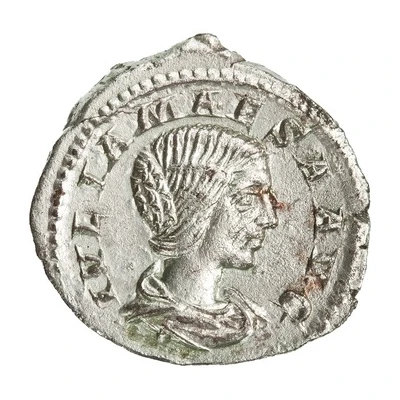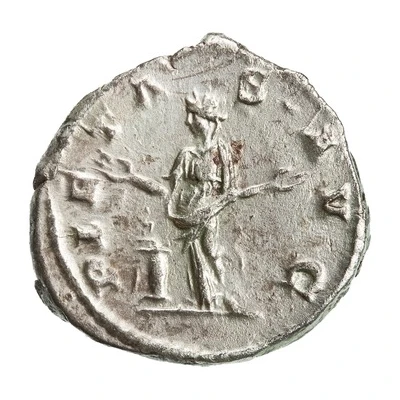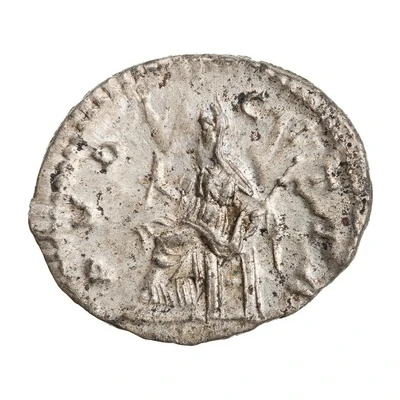


© American Numismatic Society (ANS)
Denarius - Julia Maesa PIETAS AVG; Pietas
| Silver | 3 g | 19 mm |
| Issuer | Rome › Roman Empire (27 BC - 395 AD) |
|---|---|
| Emperor | Elagabalus (Sextus Varius Avitus Basianus) (218-222) |
| Type | Standard circulation coin |
| Years | 218-222 |
| Value | Denarius (½) |
| Currency | Antoninianus, Reform of Caracalla (AD 215 – 301) |
| Composition | Silver |
| Weight | 3 g |
| Diameter | 19 mm |
| Shape | Round (irregular) |
| Technique | Hammered |
| Orientation | Variable alignment ↺ |
| Demonetized | Yes |
| Updated | 2024-10-05 |
| Numista | N#276934 |
|---|---|
| Rarity index | 94% |
Reverse
Pietas, draped, standing left, raising both hands; to left, altar.
Script: Latin
Lettering: PIETAS AVG
Translation:
Pietas Augusti.
Piety of the emperor (Augustus).
Comment
Mass varies: 2.668–3.29 g;Diameter varies: 18.5–19.96 mm;
Example of this type:
American Numismatic Society (ANS)
Source:
Online Coins of the Roman Empire (OCRE)
Interesting fact
One interesting fact about the Denarius - Julia Maesa (PIETAS AVG; Pietas) coin is that it features an image of the Roman goddess Pietas, who represents duty, loyalty, and devotion, on its reverse side. This coin was minted during the reign of Emperor Elagabalus, who was known for his controversial religious reforms and his efforts to promote the worship of Eastern deities in Rome. The image of Pietas on the coin may have been a way for Elagabalus to promote his religious agenda and to emphasize the importance of loyalty and devotion to the Roman state and its gods.

